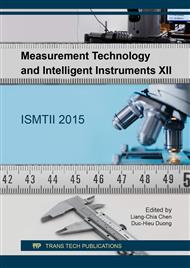p.375
p.383
p.389
p.395
p.401
p.407
p.412
p.418
p.427
Drain Side N+ Layout Manners ("npnpn" Arranged-Type) on ESD Robustness in the 60-V pLDMOS-SCR
Abstract:
Electrostatic-discharge (ESD) immunity measurements of different layout manners in the drain-side of HV pLDMOS devices are investigated in this paper. Here, eleven kinds of drain-side "npnpn" arranged-types of pLDMOS-SCR parasitic structure are used to evaluate the layout impacts on ESD robustness. In this study, at first the layout type of N+ region is continuous extended into the drain-side P+ cathode. Secondly, the layout type of N+ region is modulated by some discrete-distributed areas in the drain-side. From the experimental results, we can find that the ESD capability of the continuous extended and discrete distributed in the drain-side can be promoted, where all of the secondary breakdown current (It2) values can be achieved 7 A. However, the discrete-distributed layout type has higher breakdown voltage (VBK) than that of the reference group (the pure none modulated pLDMOS-SCR npnpn-type structure). Therefore, the discrete-distributed layout types show good electrical properties and reliability immunities.
Info:
Periodical:
Pages:
401-406
Citation:
Online since:
September 2017
Authors:
Price:
Сopyright:
© 2017 Trans Tech Publications Ltd. All Rights Reserved
Share:
Citation:


